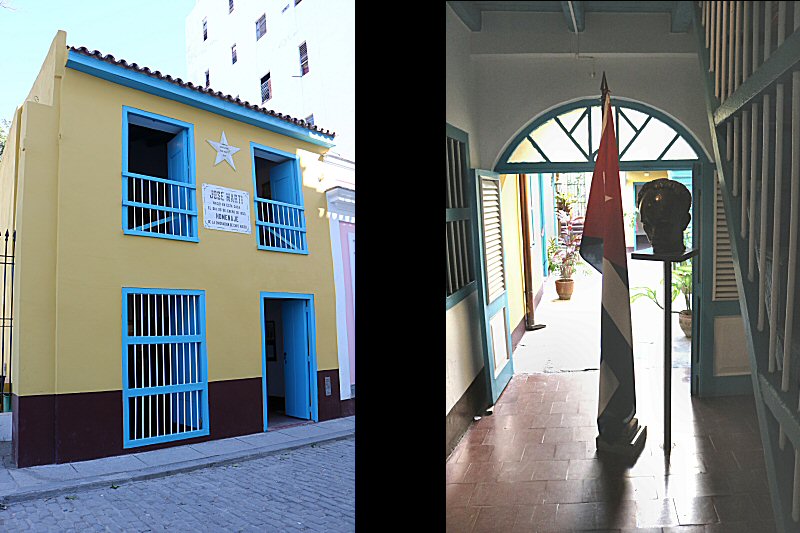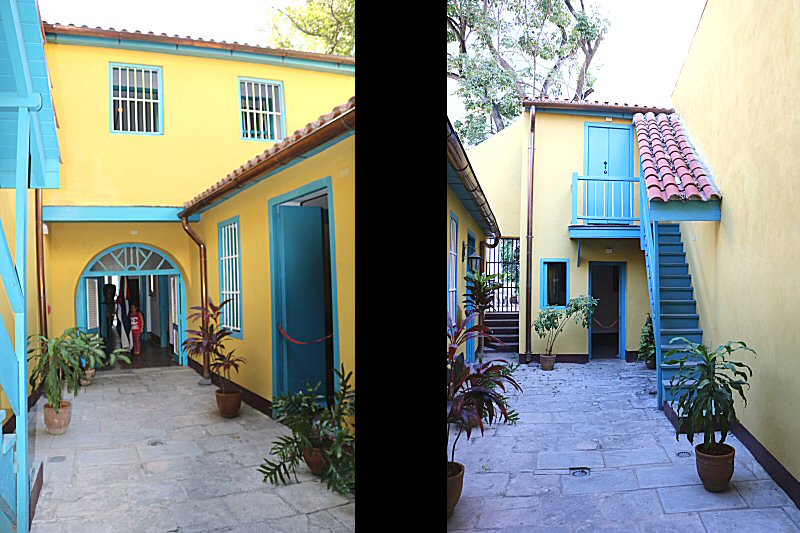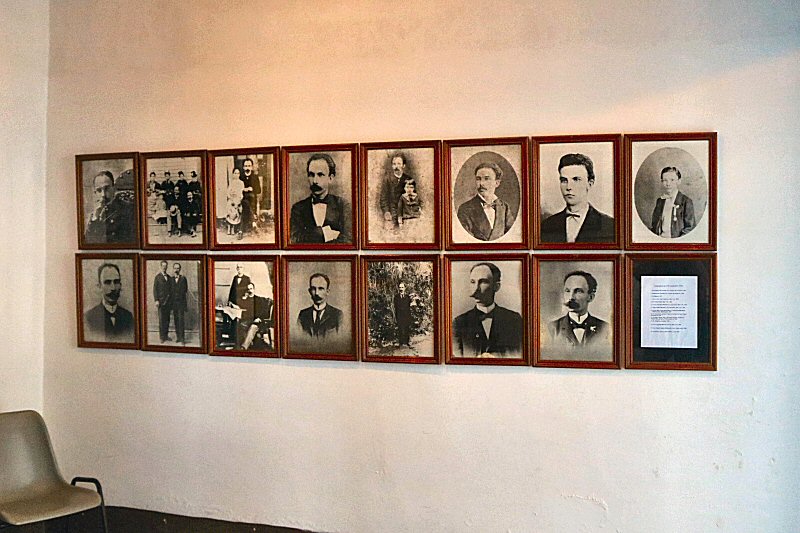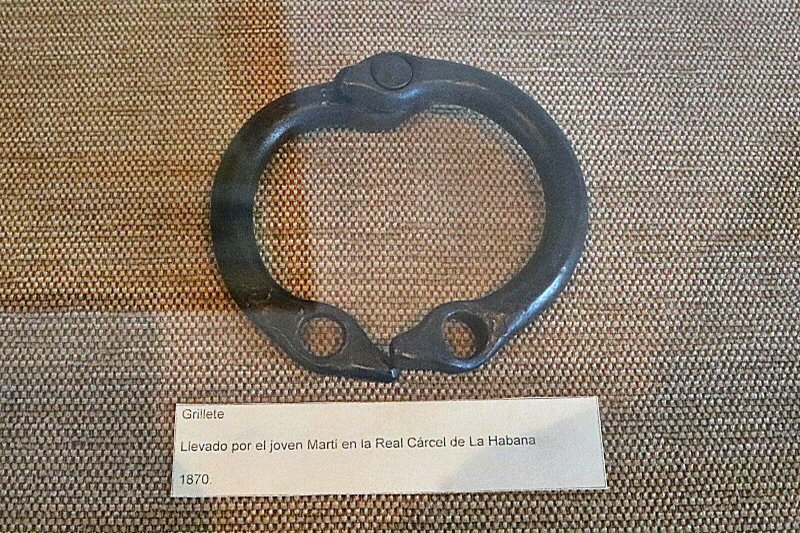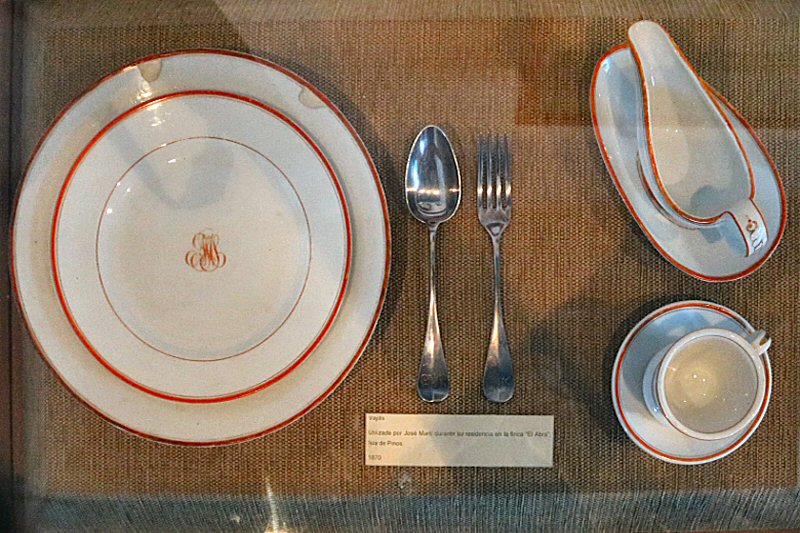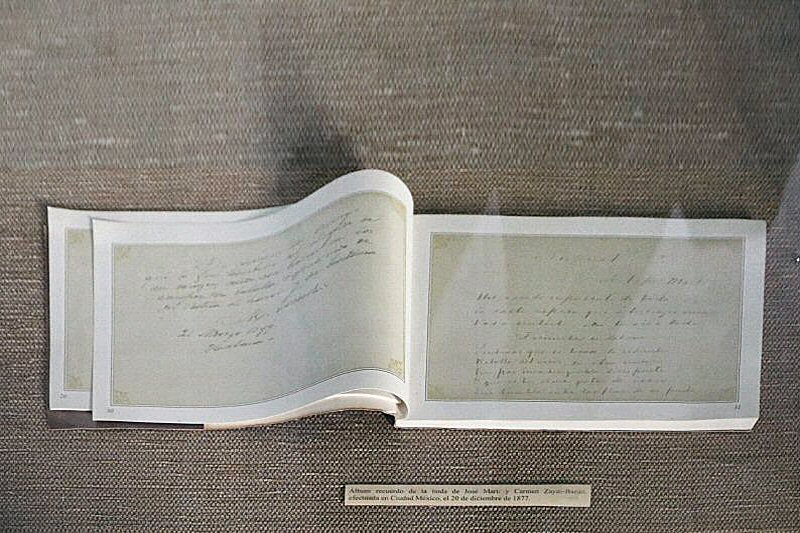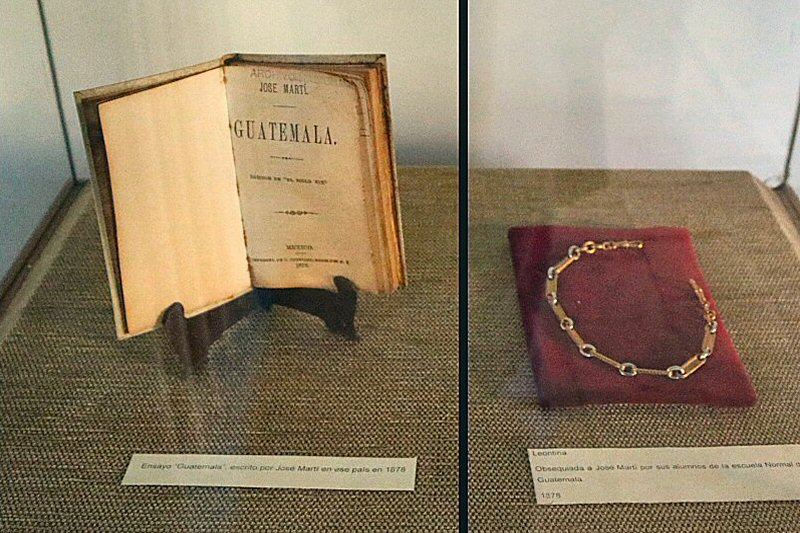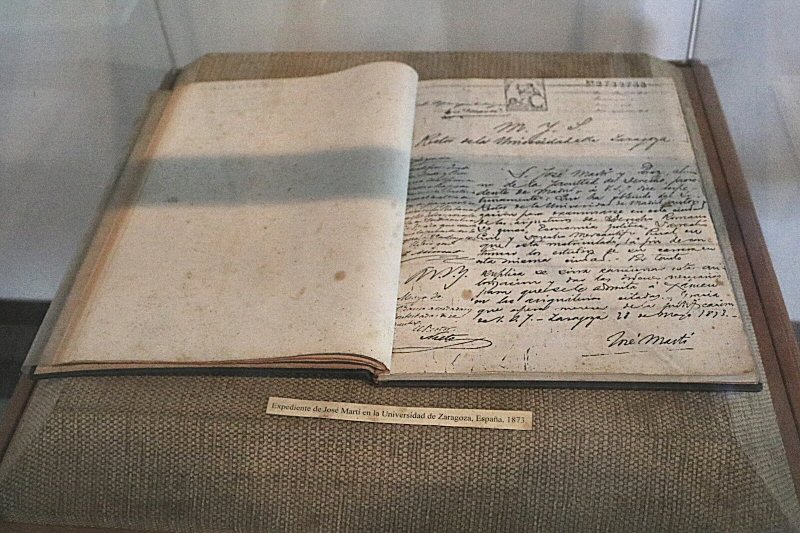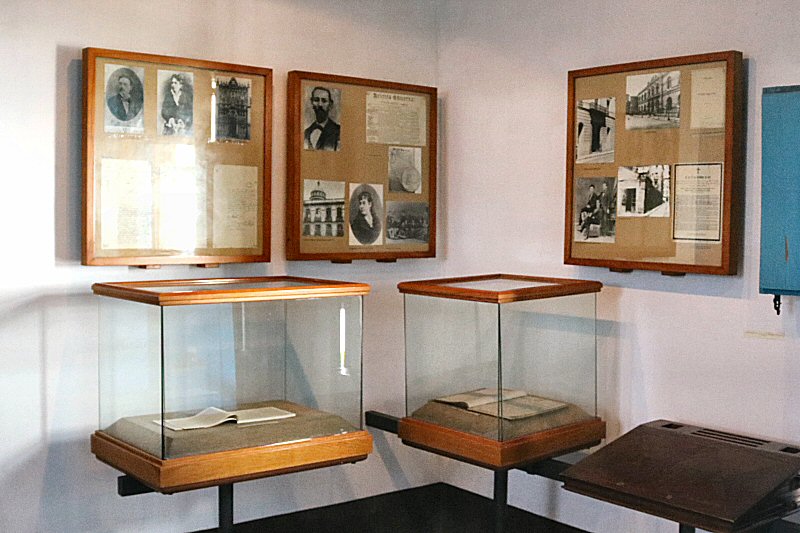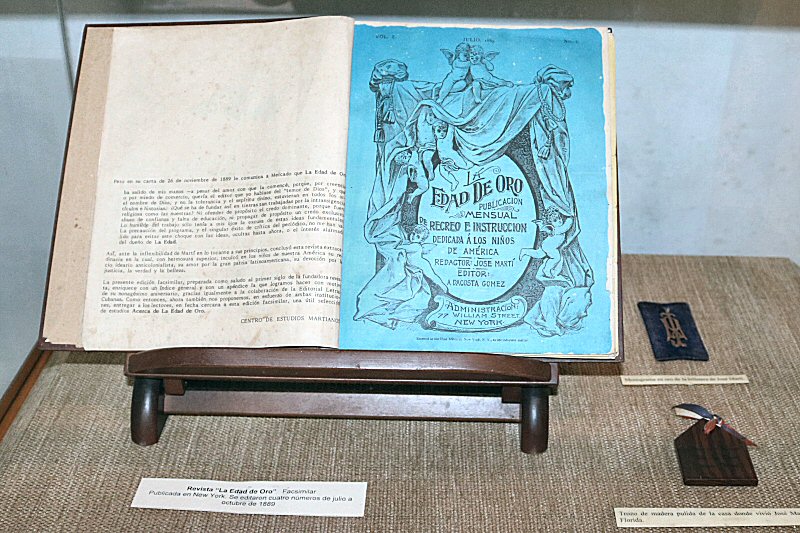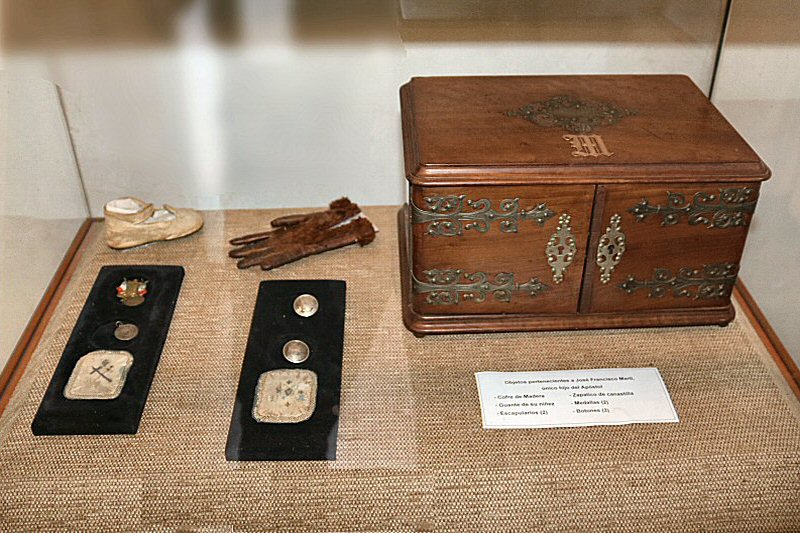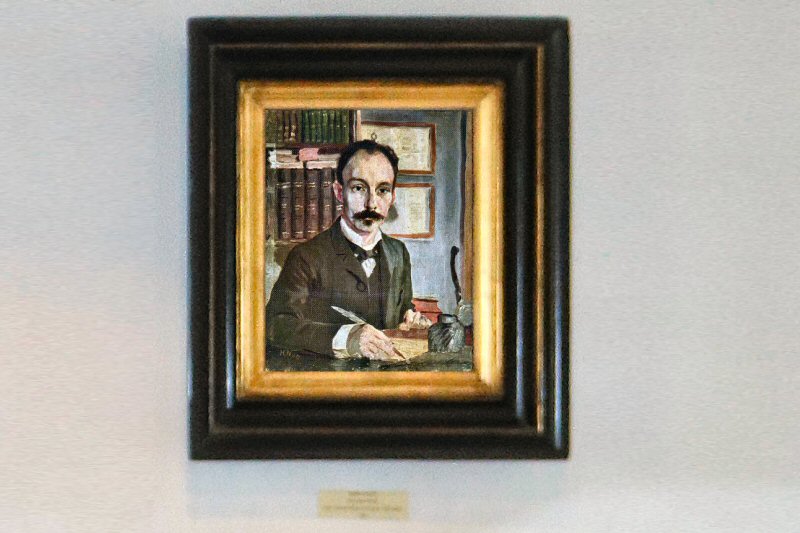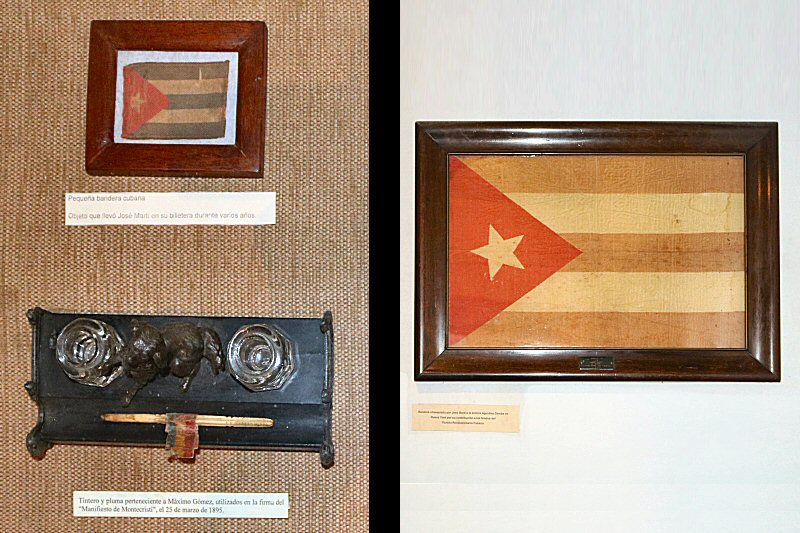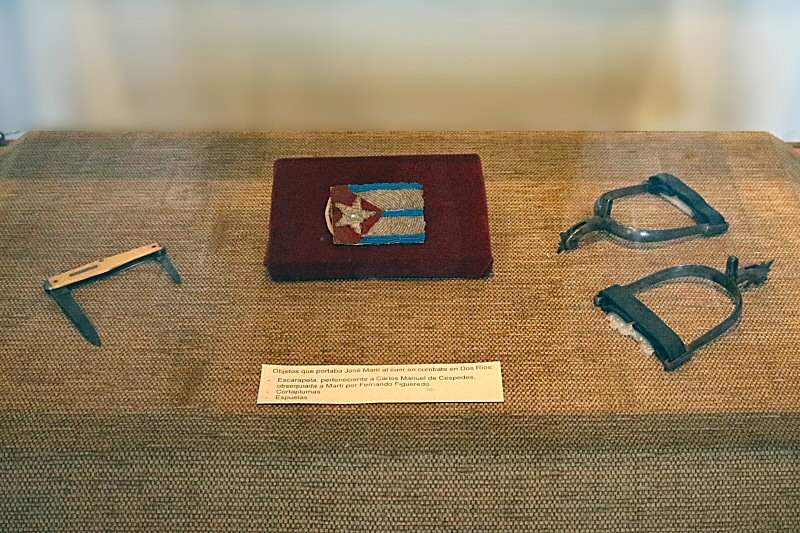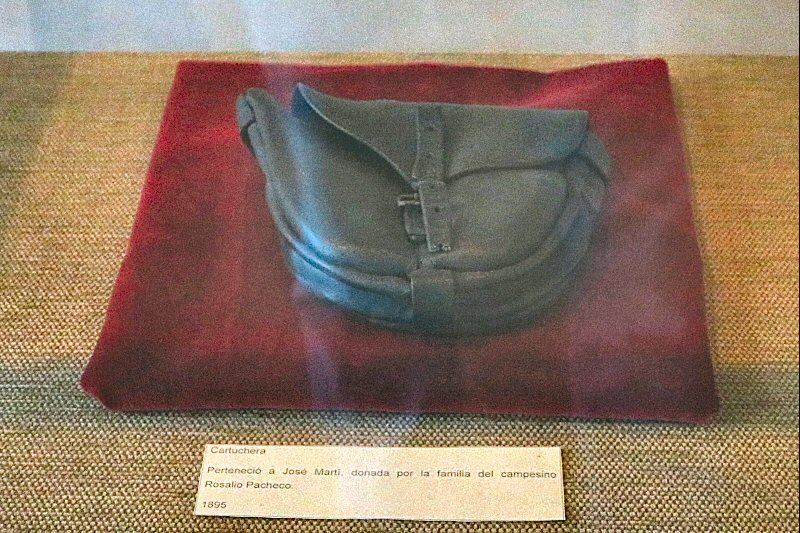
The Museo Casa Natal de José Martí is
located on the Avenida de Bélgica #314, at the corner of the
Leonor Pérez street (former Paula street), opposite to the
Estación Central de Ferrocarriles (Central Railway Station).
This two-floors colonial house was one of the four
buildings that were built in same period on the street of
San Francisco de Paula or just Paula, as they simply called
it, in the 19th century. At that time, it was marked with
the house number #41. The Cuban National Hero José Julián
Martí Pérez was born in this house as the son of the
Valencian Mariano Martí and the Tenerife Leonor Pérez in 28
of January of 1853. Martí’s family moved from this house in
1856, so that it came into possession of several persons. A
charity activity was held in the Teatro Martí, with the aim
of raising funds required to buy the birth house of José
Martí and give it to his mother, Leonor Pérez. Thus, in 1900
it became possible to give the house to Leonor Pérez, the
mother of José Martí, that lived here about five years until
her death in 1907.
A small group of Cubans, headed by the journalist Arturo de Carricarte, initiated a movement to collect and to preserve the objects and the documents that belonged to José Martí, so that the first museum of Havana was founded in 1925. The museum didn’t receive any official support until its restoration after the revolution. It was declared National Monument in 1949 and approved in 1978. After a long restoration process that was negatively influenced by the explosion of the steamship La Coubre in 1960, as the property suffered considerably damage, it was inaugurated in 1963 and the house was named officially the Museo Casa Natal de José Martí (Natal House Museum of José Martí).
The perfectly preserved blue-and-yellow humble house has 7 exhibition rooms, a courtyard and a small, but valuable library. Room 1: It corresponds to the birthplace of José Martí. The displayed objects cover the period from 1853 to 1870. The braided hair of José Martí, when he was four years of age; a dessert spoon that was used by José Martí and his sisters; a hat and a towel that belonged to the layette of José Martí and his sisters are some objects from his childhood. The crockery used by José Martí during his residence at the El Abra farm in Isla de Pinos in 1870 and the replica of the shackle, carried by Martí in the Real Carcel de Habana in 1870 (the original is in the Memorial a José Martí), are some objects from his youth.
Room 2: It embraces the period
from his deportation to Spain until his marriage with Carmen Zayas-Bazán y Hidalgo. Martí had to reside in Spain for four
years (1871-1875). Then he met his family in Mexico and stayed
there, except a short stay in Guatemala, until 1877, where he
married the young Camaguey girl. In the showcases you will see
José Martí's file at the University of
Zaragoza, Spain in 1873; the record album of the
wedding of José Martí and Carmen Zayas-Bazán y Hidalgo, made in
Mexico City in December 20, 1877; the essay, Guatemala, written
by José Martí in this country in 1878 and the pocket watch chain,
given to José Martí by his students from the Normal School of
Guatemala in 1878.
Room 3: It covers the years that Martí spent in Havana from 1878 to 1879. His only son, José
Francisco Martí, was born during this period. His short stay was
reflected as a short summary by the photos at the panels.
Room 4: It covers the period
from his second deportation to New York to the years that he
spent in some Latin American countries, such as Venezuela,
Uruguay, Argentina and Paraguay (1880-1890). He devoted himself
entirely to the organization of a war that would succeed in the
independence of Cuba. A short information about his only son
José Francisco is given on a panel. You can see also some of his
objects displayed in a showcase, such as a wooden chest, a glove
from his childhood, a bootie, cockades, medallions and buttons.
In this room you will also see a key given to José Martí by the
directory of Venezuelan school Santa de Maria Caracas, a piece
of polished wood from the house, where José Martí lived in
Tampa, Florida, and a facsimile of the magazine the Edad de Oro
(Golden Age)
that was published in New York (four issues were published from
July to October 1889).
Room 5: We see Martí either as a diplomat of some Latin American countries, and as a person that took responsibility in forming the Cuban Revolutionary Party, and as the editor of the newspaper Patria (1891-1892). The furniture (the table, the chair and the desk) in the room was used by Martí in his office in New York. At the wall you will see the portrait of Martí, painted by the Swedish painter Hermann Norman in 1891. It is the only known oil on canvas portrait of the hero.
Room 6: It illustrates the activities of Martí during the period from 1891 to 1895. As the delegate of the Cuban Revolutionary Party, Martí made great effort for the resumption of the atmosphere for the independency of Cuba. Several times he visited the Latin American countries and prepared for the outbreak by contacting General Máximo Gomez. In this room you will see the Jipijapa hat, given to Martí by Eloy Alfaro, the President of Ecuador, in 1894; an inkwell and a pen that belonged to Máximo Gomez, who used it in the signing of the Manifesto de Montecristi in 1895; a small Cuban flag that José Martí had in his wallet for several years, and at the wall a banner donated by José Martí to Mrs. Agustina Gamba in New York for her contribution to the funds of the Cuban Revolutionary Party.
Room 7: It corresponds to the last year of his life
(1895). His arrival in Cuba and his fall in combat in Dios Rios
on May 19, 1895. In a showcase the penknife and the spurs of Martí and the cockade that belonged to Carlos Manuel de Céspedes
are displayed. You can see also a pencil case that belonged to
José Martí, donated by the family of the peasant Rosalio Pacheco
in 1895.
